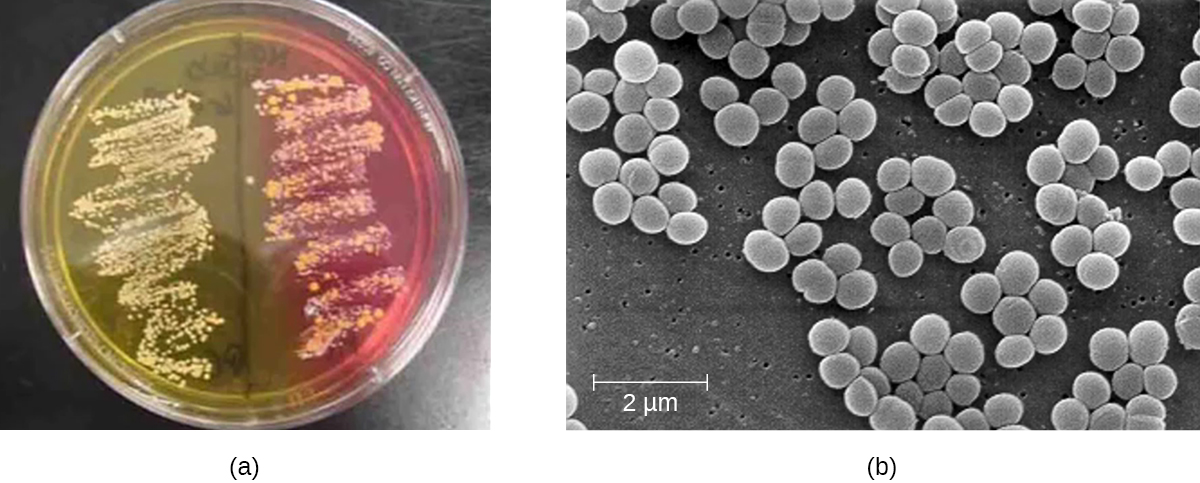| << Chapter < Page | Chapter >> Page > |
To confirm the causative agent of a suspected staphylococcal skin infection, samples from the wound are cultured. Under the microscope, gram-positive Staphylococcus species have cellular arrangements that form grapelike clusters; when grown on blood agar, colonies have a unique pigmentation ranging from opaque white to cream. A catalase test is used to distinguish Staphylococcus from Streptococcus , which is also a genus of gram-positive cocci and a common cause of skin infections. Staphylococcus species are catalase-positive while Streptococcus species are catalase-negative.
Other tests are performed on samples from the wound in order to distinguish coagulase-positive species of Staphylococcus (CoPS) such as S. aureus from common coagulase-negative species (CoNS) such as S. epidermidis . Although CoNS are less likely than CoPS to cause human disease, they can cause infections when they enter the body, as can sometimes occur via catheters, indwelling medical devices, and wounds. Passive agglutination testing can be used to distinguish CoPS from CoNS. If the sample is coagulase-positive, the sample is generally presumed to contain S. aureus . Additional genetic testing would be necessary to identify the particular strain of S. aureus.
Another way to distinguish CoPS from CoNS is by culturing the sample on mannitol salt agar (MSA) . Staphylococcus species readily grow on this medium because they are tolerant of the high concentration of sodium chloride (7.5% NaCl). However, CoPS such as S. aureus ferment mannitol (which will be evident on a MSA plate), whereas CoNS such as S. epidermidis do not ferment mannitol but can be distinguished by the fermentation of other sugars such as lactose, malonate, and raffinose ( [link] ).

According to the CDC, 86% of invasive MRSA infections are associated in some way with healthcare, as opposed to being community-acquired. In hospitals and clinics, asymptomatic patients who harbor MRSA may spread the bacteria to individuals who are more susceptible to serious illness.
In an attempt to control the spread of MRSA, hospitals have tried screening patients for MRSA. If patients test positive following a nasal swab test, they can undergo decolonization using chlorhexidine washes or intranasal mupirocin. Some studies have reported substantial reductions in MRSA disease following implementation of these protocols, while others have not. This is partly because there is no standard protocol for these procedures. Several different MRSA identification tests may be used, some involving slower culturing techniques and others rapid testing. Other factors, such as the effectiveness of general hand-washing protocols, may also play a role in helping to prevent MRSA transmission. There are still other questions that need to be addressed: How frequently should patients be screened? Which individuals should be tested? From where on the body should samples be collected? Will increased resistance develop from the decolonization procedures?
Even if identification and decolonization procedures are perfected, ethical questions will remain. Should patients have the right to decline testing? Should a patient who tests positive for MRSA have the right to decline the decolonization procedure, and if so, should hospitals have the right to refuse treatment to the patient? How do we balance the individual’s right to receive care with the rights of other patients who could be exposed to disease as a result?

Notification Switch
Would you like to follow the 'Microbiology' conversation and receive update notifications?